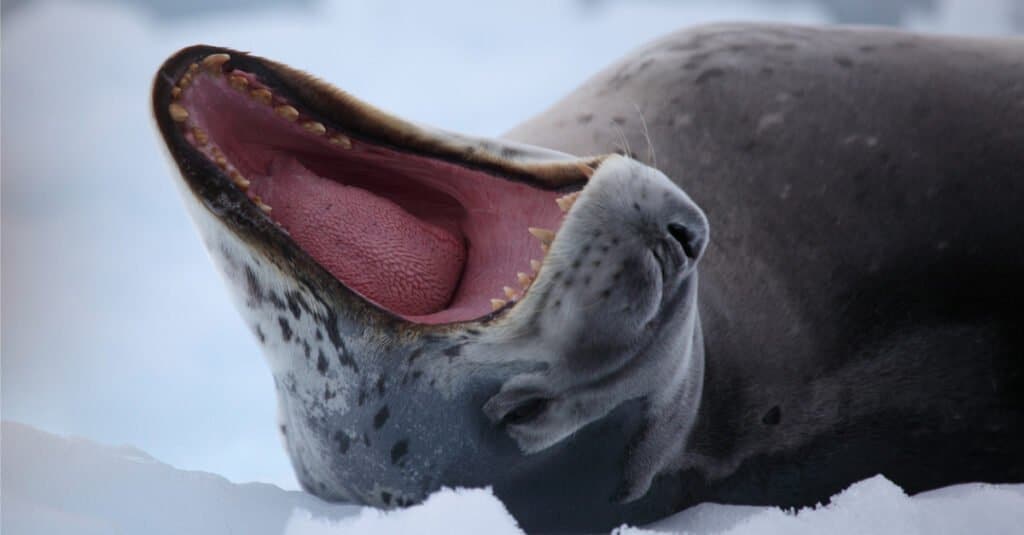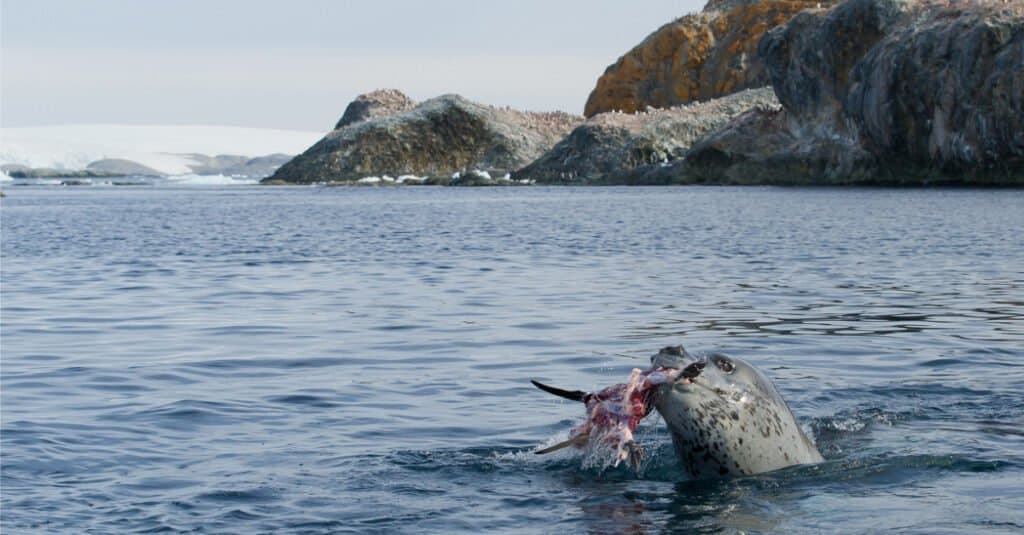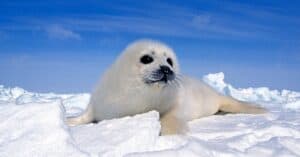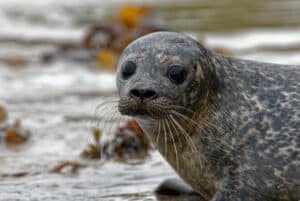Have you ever seen or watched a video of a baby seal? If you have, then you pretty sure found them incredibly cute. Their two gleaming eyes, paired with a cute snout topped with sensitive whiskers, all contribute to these sea creatures’ charming facade. But not all seal species are charming both inside and out. The leopard seals, for instance, have a voracious appetite that makes them the most aggressive and dangerous seal in the world, not to mention one of the cutest but deadliest animals on the planet!
Leopard seals may look like they are innocent, especially when they are out of water because they seem too clumsy. Yet, when they are underwater, they are finely skilled as predators and can maneuver well amidst the frigid waters of Antarctica. Leopard seals are voracious carnivores, and they are thirsty for blood! As huge predators – one of the largest seal species, in fact – they usually eat penguins, fish, and squid. Leopard seals look just as cute as other seal species, but perhaps not until you see their serrated yet unusual dental structure.
What Do Leopard Seal Teeth Look Like?

Leopard seals have sharpened cheek teeth which makes it easier for them to extract krill from water.
©iStock.com/MogensTrolle
Like other meat-eaters, leopard seals have sharp canines that can pierce through their prey’s bodies. What is unique to them, however, is their set of molars that lock together in order for them to filter the water with krill and devour them.
The leopard seal’s diverse diets are mirrored in their unique tooth structure, which is unusual for most seal species. Additionally, their cheek teeth are sharpened, making it easier for them to extract krill from the water.
What Do Leopard Seals Eat?

Leopard seals, the top predators in Antarctica, eat fish, penguins, and other seals.
©iStock.com/mzphoto11
Leopard seals eat a massive diet that includes fish, penguins, krill, and other seals.
Surprisingly, leopard seals, together with killer whales, are the top predators in Antarctica. Fur seal pups and crabeater seals, as well as immature Weddell, Ross, and southern elephant seals, are among their preferred prey. Seems like these cute meat-eaters are not so cute and innocent after all.
Leopard seals are known for their spotted coats and menacing teeth, for which they are named for. Studies of their wild diet have shown that leopard seals aren’t just known for hunting sizable prey, but they’re also known for eating smaller species, such as Antarctic krill. But how can a humongous predator with sharp, long teeth feed on small prey?
Leopard seals can filter krill from the water using their highly modified rear teeth, which contain gaps. These gaps between the premolars and molars interlock to act as a strainer when catching krill.
What Kind of Teeth Do Leopard Seals Have?
As notorious predators, leopard seals have long and very sharp front teeth, with their canines reaching 1 inch in length. These long and serrated canines and incisors are built for capturing prey, piercing and cutting through their meat, and killing them. Since they also feed on krill, which composes about 45% of their diet, they use their trident-shaped molars and premolars that form a net to sieve krill and other small prey.
A leopard seal’s dental formula is: Incisors 2/2; Canines 1/1; Post-Canines 5/5, representing the numbers as “top/bottom” on each side of the jaw.
How Do Leopard Seal Teeth Work?

Unlike most seals, leopard seals use their cheek teeth to capture krill.
©iStock.com/Bkamprath
The leopard seal’s cheek teeth differ from other seal species. Most of the other seals swallow their food whole and use their back molars to crush crustaceans. Leopard seals, on the other hand, use oddly-shaped cheek teeth to capture krill.
In suction feeding, animals reduce their mouth pressures relative to the ambient pressure, allowing any prey moving in front of their mouth to be vacuumed along with the water. However, this process requires predators to purge the excess water before they can ingest their catch. Here, leopard seals show off their unique talent.
Leopard seals appear to regulate the flow of water through their fleshy cheeks, and water had to flow between their trident-shaped cheek teeth to escape the mouth. Any food that is suctioned by the leopard seal is therefore confined behind the sieve in their teeth, preventing them from flowing back to the water.
How Do Leopard Seals Kill Their Prey?
When leopard seals devour penguins, the penguin is swung forcefully in a sweeping vertical and slammed to the water’s surface. They will keep on doing this until the penguin is torn apart into pieces, and then they will swallow it. In the sea, floating penguin skins are a reliable sign that leopard seals are around the area.
Leopard seals have a large muscular head, a broad, frightening gape, and a massive lower jaw. Their fore-flippers are powerful enough to push them at 25 miles per hour. Compared to other seals, leopard seals are not as good at diving. They can only dive for 15 minutes, and they prefer to stay near the surface of the water rather than submerge themselves in continuous ice like some other seals are fond of.
Can Leopard Seals Bite Humans?
Due to their slow and heavy movements, leopard seals tend not to bother pursuing prey while they are out of the water. If they wanted to kill a person, they would have no problem doing so in the sea, where they are ideally suited and adapted.
Fortunately, though, attacks by leopard seals are extremely rare, in part due to the fact that leopard seals inhabit areas where humans are scarce. There may have been a tragic incident with a scientist in Antarctica that involved a leopard seal, but that was the only record of a leopard attack on humans so far. There have also been, however, a report of a sympathetic leopard seal trying to feed humans with penguins!
These aquatic predators often approach small boats out of curiosity, but because of their enormous “grin” and pointy teeth, they can look frightening. They may be unpredictable, so caution is still of utmost importance around these sharp-toothed predators.
The photo featured at the top of this post is © iStock.com/serengeti130
Thank you for reading! Have some feedback for us? Contact the AZ Animals editorial team.






